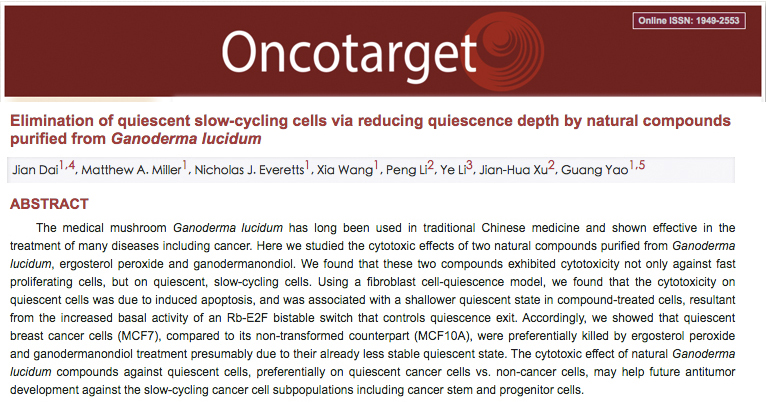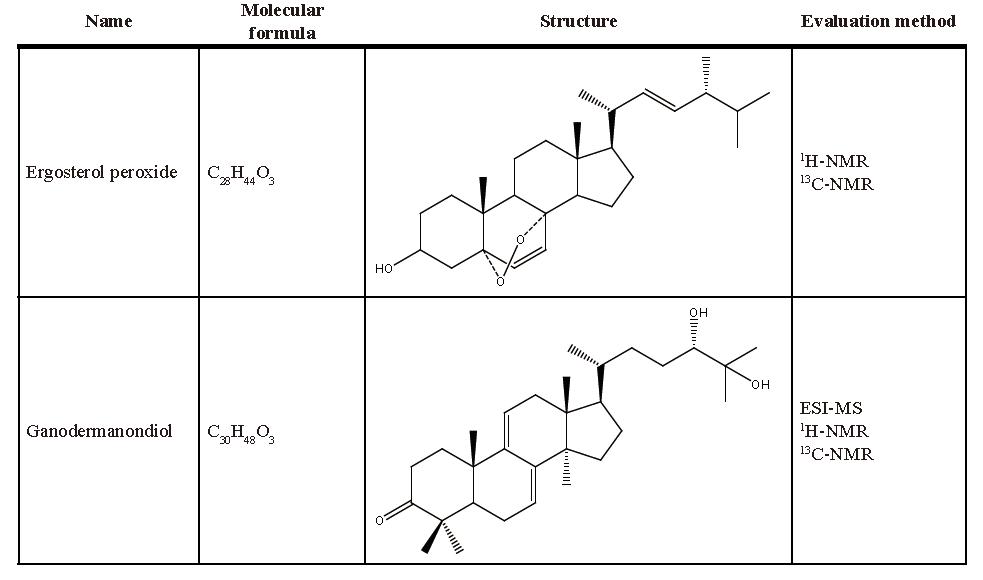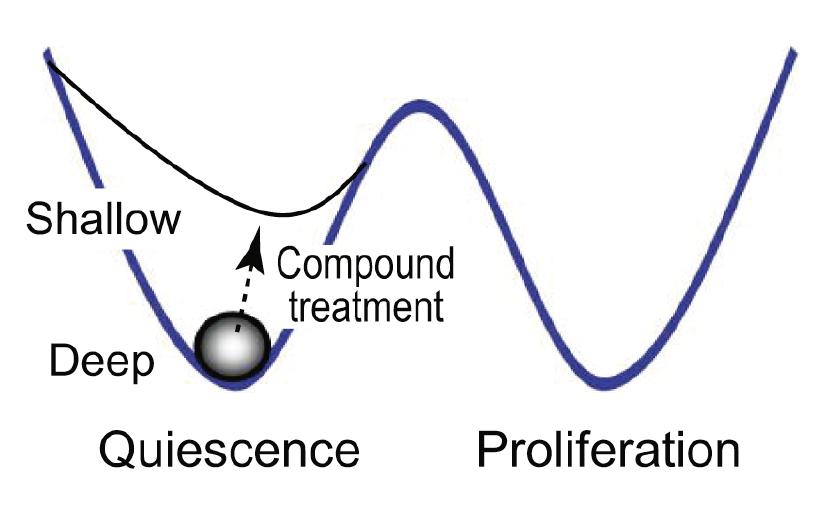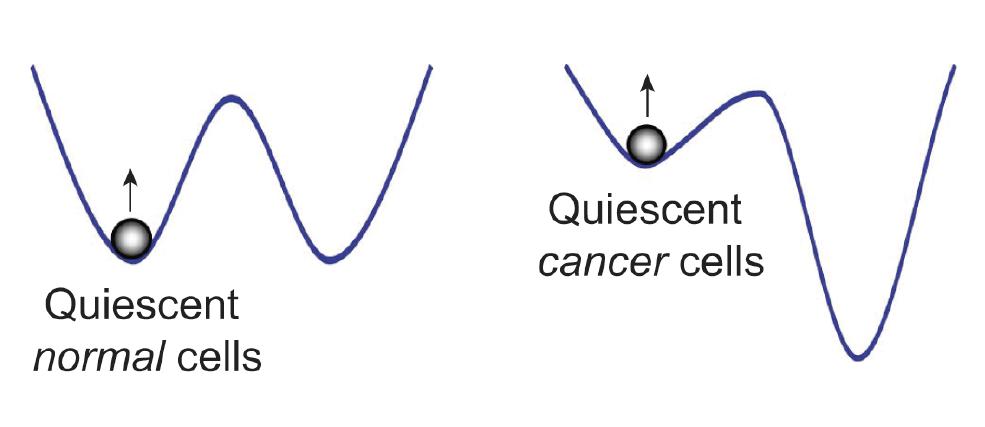January 13, 2017 / Fujian Medical University, the University of Arizona, etc. / “Oncotarget”
Text/Wu Tingyao

Many cancer patients who have gone through untold hardships in treatment are wondering why a tumor that they feel has been “cured” will relapse again after a long period of silence. The crux lies in cancer stem cells.
In the face of numerous drug attacks, some cancer stem cells will enter a dormant state and stop cell division in order to survive. This is one of the reasons why drugs that “attack rapidly proliferating cells as targets” cannot kill this group of tumor stem cells. Malignant tumors leave behind a resurgence of “seeds” only to find a chance to fight again someday.
Therefore, as long as this group of dormant tumor stem cells can be “awakened” and allowed to re-enter a fast-dividing proliferation state, there is a chance to kill them with existing drugs.
A team led by Professor Jian-Hua Xu from the College of Pharmacy of Fujian Medical University and the University of Arizona jointly published a study on “Oncotarget” in January 2017 pointing out that Ganoderma lucidum (Lingzhi, Reishi mushroom) sterols and triterpenes can play an anti-tumor role by reducing the quiescence depth of cancer cells.
The researchers isolated two natural active components from the ethanol extract of Ganoderma lucidum fruiting bodies: ergosterol peroxide and ganodermanondiol.

Molecular formula and chemical structure of ergosterol peroxide and ganodermanondiol (Source/Oncotarget. 2017 Jan 13. doi: 10.18632/oncotarget.14634.)
Experiments have found that they can not only effectively inhibit rapidly proliferating cancer cells and reduce their survival rate but also induce quiescent, slow-cycling cells to apoptosis. Their cytotoxic effect against the latter is even better than that of chemotherapeutics such as Doxorubicin, Paclitaxel and Topotecan.
Why did this happen? It turns out that the Rb-E2F molecule in the quiescent cells will be activated by these two Ganoderma lucidum components. It is a switch that determines whether a cell divides or not. When its activity increases, the quiescent state of the cell will change from deep to shallow ── The cell seems to be pulled from the original deep sleep to the light sleep. As long as it is stimulated slightly, it is easy to be “woke up” and reproduce vigorously again (as shown in the following figure).

How Ganoderma lucidum breaks the dormant state of cancer cells
Dormant cancer cells, after being treated with Ganoderma lucidum sterols or triterpenes, their quiescent depth (stop or slow down cell division) will become shallower, and they are easy to return to a state of rapid proliferation due to some stimuli. At this time, they are hard to escape the attack of drugs that target rapidly proliferating cells (Source/Oncotarget. 2017 Jan 13. doi: 10.18632/oncotarget.14634.)
The experiment of treating quiescent breast cancer cells (MCF-7) and normal breast cells (MCF-10A) with ergosterol peroxide or ganodermanondiol showed that at the same dose (20 μg/mL), the number of quiescent breast cancer cells will be preferentially reduced by half compared to normal cells (in a relatively short period of time), indicating that the quiescent state of cancer cells is not as stable as that of normal cells, so these two Lingzhi components will break through the blockade earlier (as shown below).

The difference in activity between normal and cancer cells
The most important feature of cancer cells is that they can proliferate indefinitely. Therefore, even in the quiescent stage of “slowing down or stopping cell division”, the quiescent depth of cancer cells (as shown on the right) is still shallower than that of normal cells (as shown on the left), so they are more easily to be awakened from dormancy by Reishi mushroom sterols and triterpenes. (Source/Oncotarget. 2017 Jan 13. doi: 10.18632/oncotarget.14634.)
We already know that Ganoderma lucidum polysaccharides can enhance immunity while Ganoderma lucidum triterpenes can inhibit tumor cell proliferation. The results of this research show that Ganoderma lucidum sterols and Ganoderma lucidum triterpenes can also activate dormant tumor cells (usually tumor stem cells), which helps chemotherapeutics eliminate tumor cells and reduce the chance of tumor recurrence.
So does Ganoderma lucidum rely on only one active component to inhibit tumors? Ganoderma lucidum with complete components can fight tumors in a multi-pronged way; only the multi-pronged anti-tumor way can minimize the vitality of tumor cells.
[Source] Dai J, et al. Elimination of quiescent slow-cycling cells via reducing quiescence depth by natural compounds purified from Ganoderma lucidum. Oncotarget. 2017 Jan 13. doi: 10.18632/oncotarget.14634.
END
About the author/ Ms. Wu Tingyao
Wu Tingyao has been reporting on first-hand Ganoderma information since 1999. She is the author of Healing with Ganoderma (published in The People’s Medical Publishing House in April 2017).
★ This article is published under the exclusive authorization of the author.
★ The above works cannot be reproduced, excerpted or used in other ways without the authorization of the author.
★ For violations of the above statement, the author will pursue relevant legal responsibilities.
★ The original text of this article was written in Chinese by Wu Tingyao and translated into English by Alfred Liu. If there is any discrepancy between the translation (English) and the original (Chinese), the original Chinese shall prevail. If readers have any questions, please contact the original author, Ms. Wu Tingyao.



